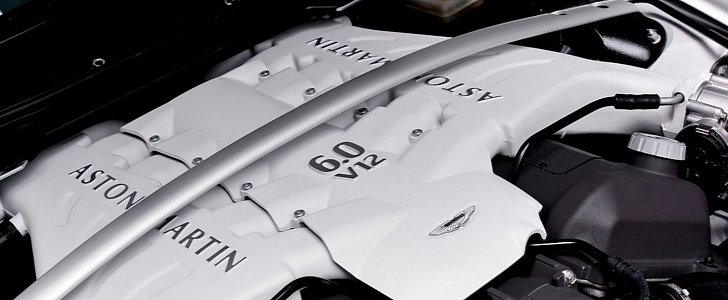British low-volume manufacturer Aston Martin intends to hang on to its legendary V12 powerplants for as long as possible. It intends to use its future electric models to balance out the CO2 emissions of its V12-engined cars. Two electric models have been confirmed by the British brand: DBX and the DB9's electric sibling.
According to Car&Driver, this strategy is Aston's compromise to keep manufacturing V12 engines instead of continually downsizing. Such an idea isn't new to the carmaking world, having been applied successfully by larger manufacturers such as BMW and Mercedes-Benz.
The two premium brands from Germany have a few models in their ranges that put out rather high CO2 numbers but managed to obtain a favorable emissions average by introducing hybrids and electric cars in their offerings.
The Aston Martin V12's future recently came into discussion since the powerplant is already 12 years old and it was developed on a platform borrowed from Ford Motor Company, the Gaydon-based carmaker's former owner.
Since Aston Martin isn't owned by Ford anymore and has temporarily received permission to keep using those particular units, the British company must soon develop a new generation V12 engine.
Currently, Aston Martin has a partnership with Daimler's AMG division, but it is focused mainly on V8 engines, with no mention of V12 powerplants.
The collaboration between the two high-performance brands also implies gearbox development and electrical systems and architecture. Aston Martin emphasized being in charge of the calibration of the V8 engine's sound before green-lighting the use of these units in its new cars.
According to Matthew Clarke, Aston Martin' Brand Communications Manager, the company "likes" its V12 engine and will "find a way" to keep making the beloved units for as long as it can. Clarke hasn’t specified if the future V12 units will manage to remain naturally aspirated or will receive some sort of supercharging solution to improve emissions.
The two premium brands from Germany have a few models in their ranges that put out rather high CO2 numbers but managed to obtain a favorable emissions average by introducing hybrids and electric cars in their offerings.
The Aston Martin V12's future recently came into discussion since the powerplant is already 12 years old and it was developed on a platform borrowed from Ford Motor Company, the Gaydon-based carmaker's former owner.
Since Aston Martin isn't owned by Ford anymore and has temporarily received permission to keep using those particular units, the British company must soon develop a new generation V12 engine.
Currently, Aston Martin has a partnership with Daimler's AMG division, but it is focused mainly on V8 engines, with no mention of V12 powerplants.
The collaboration between the two high-performance brands also implies gearbox development and electrical systems and architecture. Aston Martin emphasized being in charge of the calibration of the V8 engine's sound before green-lighting the use of these units in its new cars.
According to Matthew Clarke, Aston Martin' Brand Communications Manager, the company "likes" its V12 engine and will "find a way" to keep making the beloved units for as long as it can. Clarke hasn’t specified if the future V12 units will manage to remain naturally aspirated or will receive some sort of supercharging solution to improve emissions.

